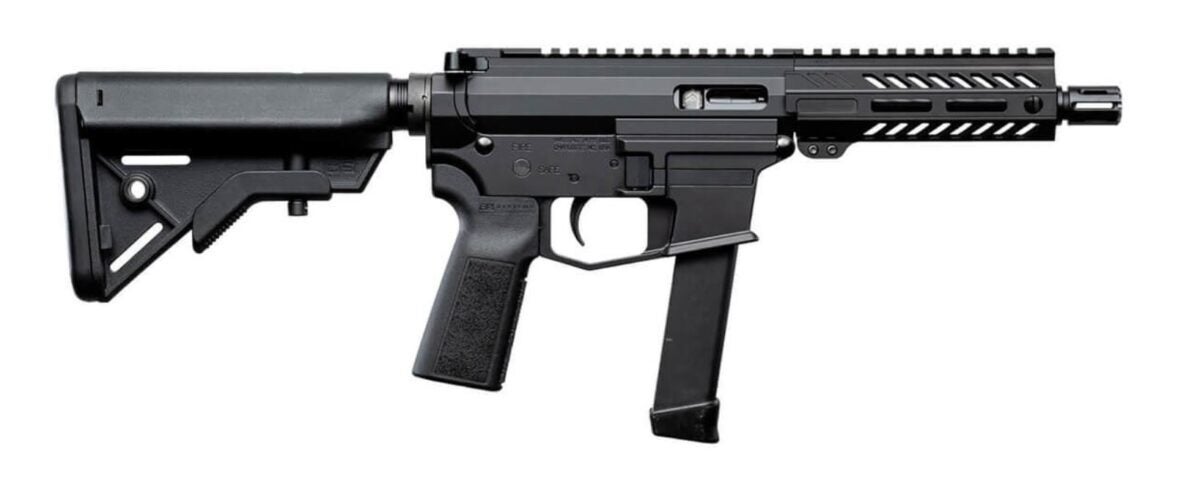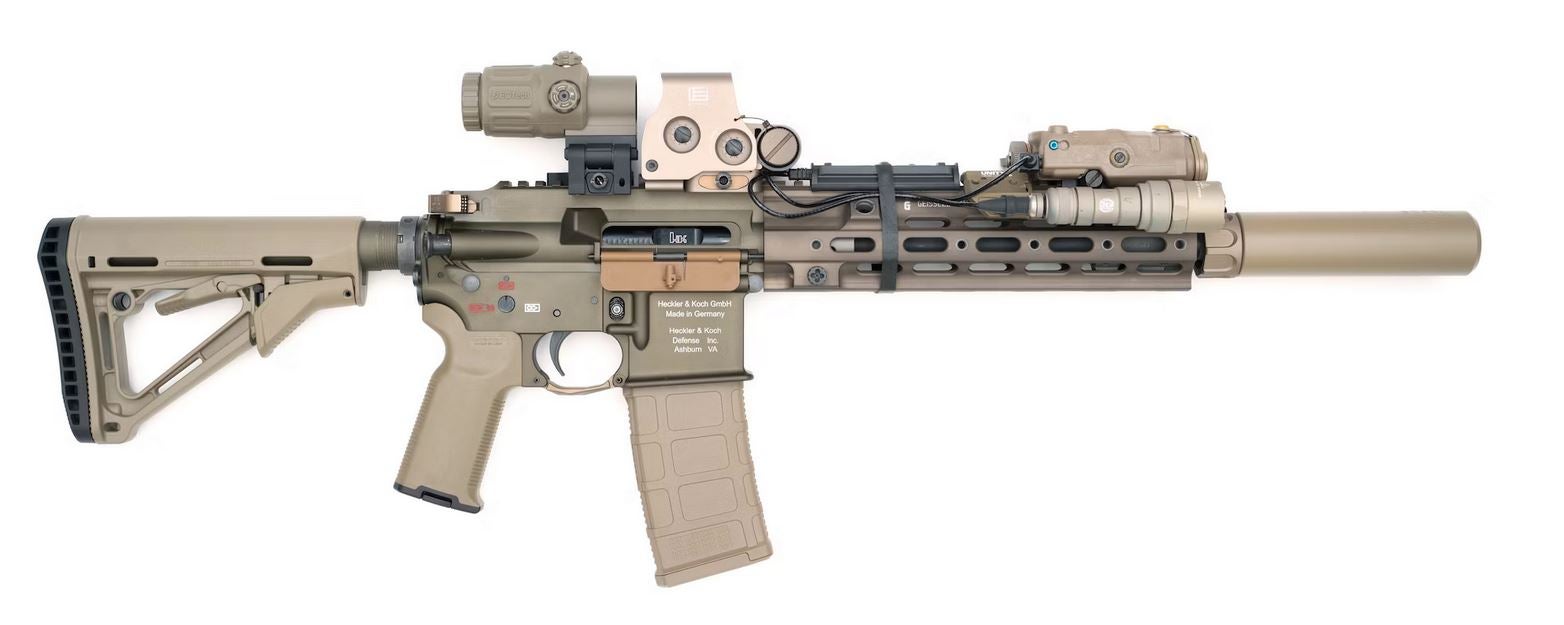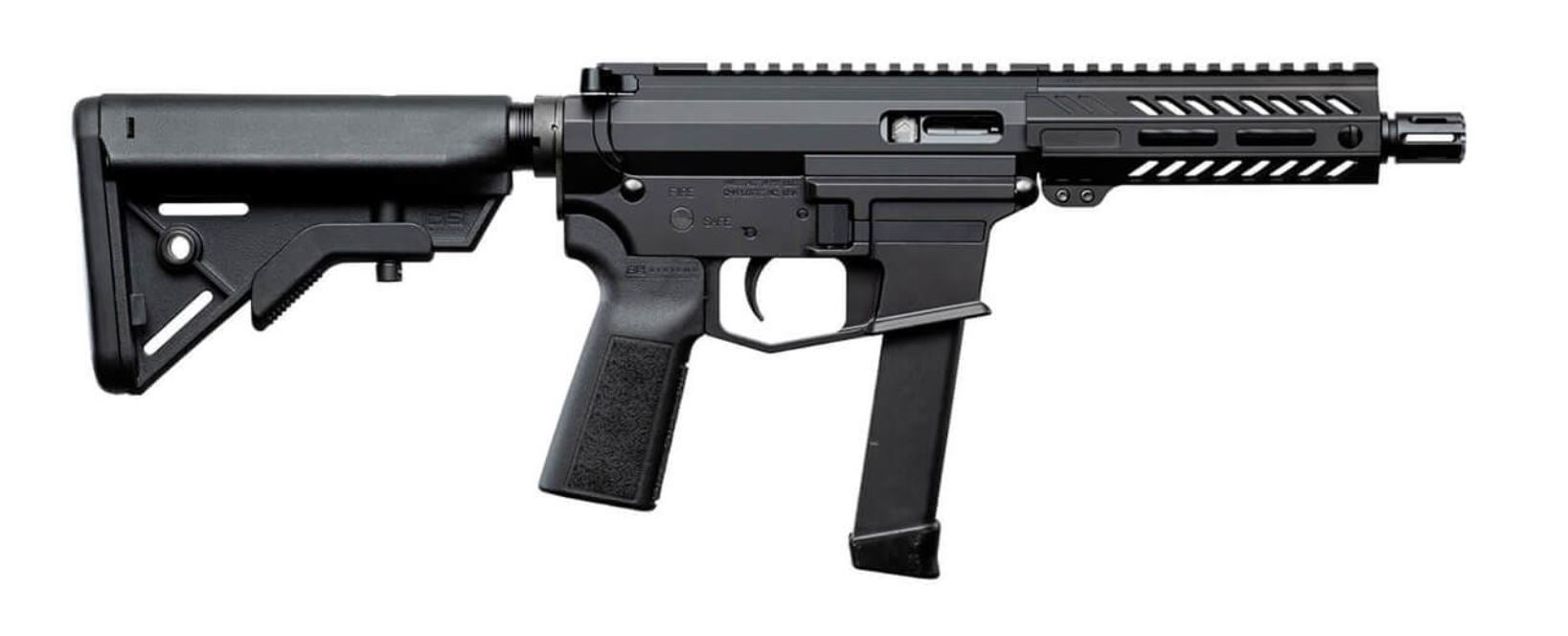Sub Guns and Suppressors: Is 9mm Better Than 300 Blackout?
Travis Olander 06.16.23

Pistol-caliber carbines are a thing nowadays, and there are plenty of calibers one can throw inside the chamber. That begs the question: Should you stick with classic 9mm for your subsonic fun, or should you consider going with the versatile 300 Blackout? We’re focusing on the AR platform in this discussion — it’s the most popular platform when it comes to pistol carbines and 300 BLK.
First, let’s break down each round and look at their ballistics.
What is 300 Blackout?

This fat, short cartridge was designed by Advanced Armament Corporation (AAC) as part of a contract for U.S military special operations. The round is merely a necked down 5.56 packed with a .30-caliber round. Its performance was intended to mimic the 7.62x39mm load, while also allowing for existing service rifles to be easily retrofitted.
To convert the standard M4 chambered in 5.56 NATO, only the barrel and gas system need to be swapped out. All other existing components — the upper and lower receivers, buffer assembly, magazines, trigger, hammer, safety, and internals — stay the same.
Importantly, 300 Blackout does something few other rounds do well, or at all: It provides supersonic and subsonic loads. Both loads are immediately interchangeable with no modification to the rifle in question. This makes 300 Blackout an excellent two-for-one round that can provide good accuracy at distance, and high stopping power with effective sound suppression up close.
What is 9mm?
Measuring 7.65x21mm, the old but reliable 9mm cartridge is one of the oldest centerfire cartridges still in wide circulation. Like 300 Blackout, 9mm is capable of providing excellent power and accuracy in supersonic and subsonic configurations. That’s why many militaries and NATO-aligned countries still chamber the 9mm load in dozens of submachine guns and handguns.
300 Blackout vs 9mm: Ballistics
We need to make two comparisons for both loads: Supersonic and subsonic performance.
300 Blackout
- Weight (average): Supersonic, 125 grains; Subsonic, 220 grains
- Velocity (average): Supersonic, 2,215 fps.; Subsonic, 1,010 fps.
- Energy (average): Supersonic, 1,350 lb.-ft.; Subsonic, 500 lb.-ft.
9mm
- Weight (average): Supersonic, 115 grains; Subsonic, 147 grains
- Velocity (average): Supersonic, 1,525 fps.; Subsonic, 1,073 fps.
- Energy (Average): Supersonic, 594 lb.-ft.; Subsonic, 376 lb.-ft.
Which is Better?
When it comes to subsonic performance, 9mm provides a bit more velocity, which translates into less bullet drop at greater distances. But it sacrifices power, providing about 25% less lb. ft. of force at the muzzle. The differences become stark when both rounds are made supersonic: 300 Blackout provides nearly twice as much velocity and more than twice as much power at the muzzle.
All is Not Lost on 9mm
But these comparisons don’t tell the whole story. For 300 Blackout to achieve this ballistic performance, it needs to be fired from a barrel measuring at least 11″. The data above was obtained from a barrel measuring 16″ in length.
9mm loads were designed long ago to be fired from barrels measuring just 3″ to 5″, and that hasn’t changed. Although 300 BLK provides more velocity and power, it requires a significantly larger, heavier, and longer rifle to get the job done.
Because 9mm maximizes velocity in such a short barrel — and because it operates on blowback, which requires no gas system, like those found on most rifles — it can be packed into a significantly smaller platform. With proper damping, 9mm provides much less felt recoil, too.
9mm is Better for Self Defense
When it comes to personal defense in close quarters, any centerfire rifle cartridge is overkill. Most loads significantly over-penetrate hard structures, and the required rifle configuration isn’t optimal for confined spaces.
9mm is much less likely to over-penetrate, and it provides a smaller, more maneuverable platform from which to fire. The hollow-point performance of the 9mm cartridge vastly outmatches that of any JHP 300 Blackout load, too.
9mm is More Affordable, Too
Ammo prices have climbed over the years. Although prices have normalized somewhat, they’ll be as low as they were five to ten years ago. At the time of this publication, 9mm is pretty affordable: Quality supersonic and subsonic loads from brands like Fiocchi, Blazer, and Magtech average $0.22 to $0.25 per round. Quality, heavy-grain defense loads demand $0.30 to $0.50 per round.
Even “cheap” 300 Blackout doesn’t provide nearly the same value: No-name reloads and mystery brass boxes start at $0.50 per round, with trustworthy subsonics from Winchester and Hornady demanding over $1.25 to $1.50 per round!
9mm is More Reliable
If you’ve ever ran a new rifle suppressed with subsonics, you’ve likely encountered the occasional failure to feed, or stovepipe. Running a subsonic rifle is simply an act of delicate tuning; these machines are finicky. When it comes to getting a 300 Blackout gun to run well, it’s always a compromise of dialing up the gas system to ensure reliable cycling, but without adding so much gas that the recoil and abuse become excessive.
The 9mm suffers none of these failures and foibles. Its blowback operation and fast-burning powder mean it’ll slam rounds down nearly any tube without issue, whether the gun in question has a 5″, 11″, or 16″ barrel with or without a suppressor. Getting a 9mm carbine to run smoothly with a can and subs simply means finding the right buffer or operating rod recoil springs to tone down the felt recoil.
So, Which is Really Better?
That depends: Are you trying to squeeze as much accuracy and range as possible out of your sub gun? Does nothing else matter? Then 300 Blackout will be your saving grace. But let’s face it: Most sub guns and suppressed setups are not intended for pinging steel beyond, say, 200 meters.
And 9mm comes with plenty of advantages over 300 Blackout in just about every other category: It’s a better defense round, it’s more affordable, it fits neatly into a smaller, lighter package, it doesn’t require a buffer system or gas system, and it functions with better reliability. So, when you’re looking at a “tacticool” subsonic AR setup with a short barrel and titanium can, don’t discount what good ole’ 9mm brings to the game. You might just find it’s the better choice overall.


